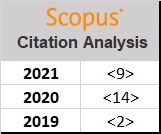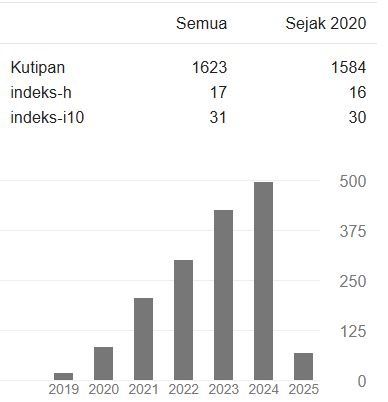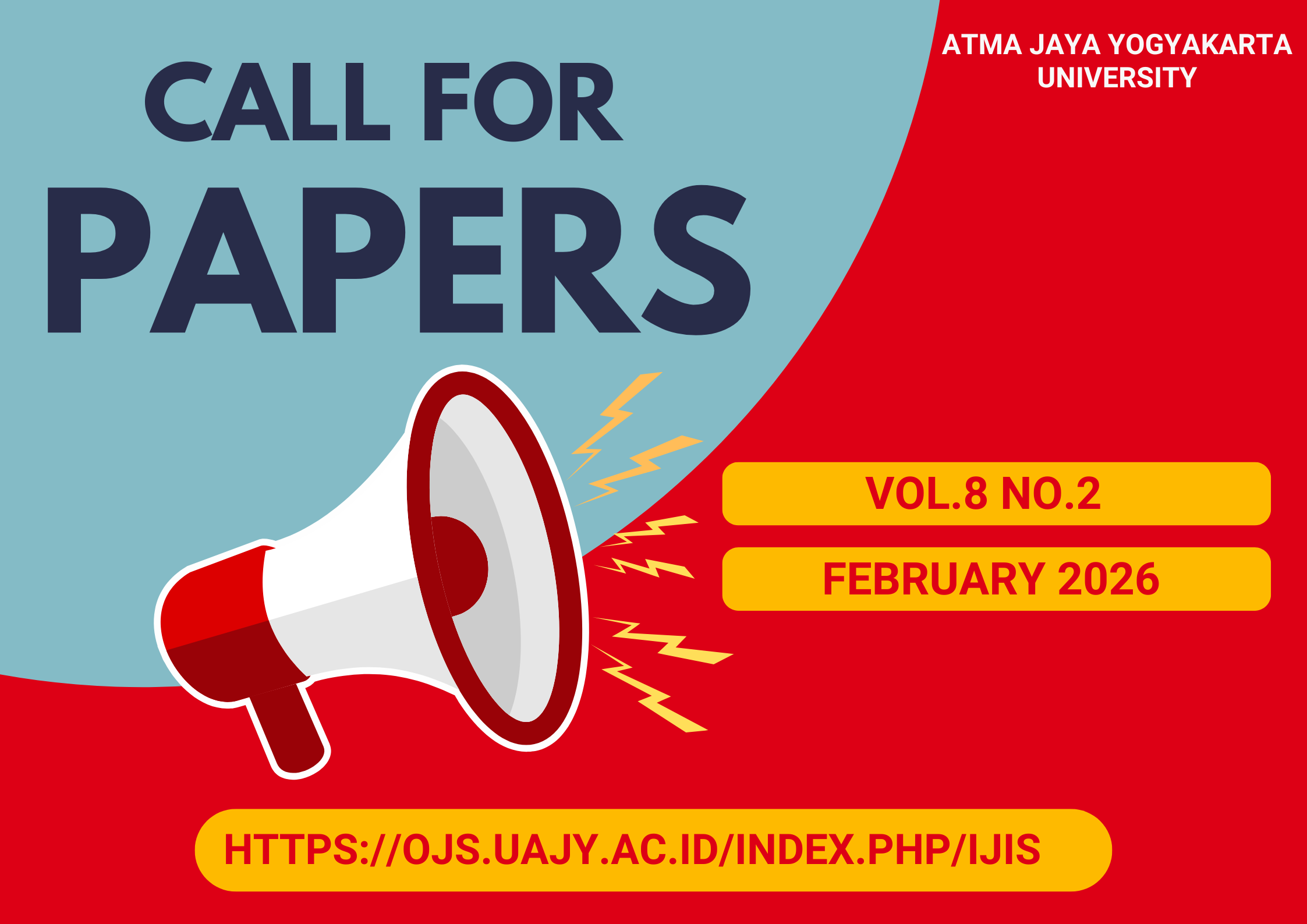The Effect of Internet Slack on Learning Performance
DOI:
https://doi.org/10.24002/ijis.v2i1.2142Keywords:
Internet Slack, Social presence, Social Interaction, Learning PerformanceAbstract
In the midst of the widespread application of the internet in learning activities, this research was conducted to assess the impact of internet abuse on classroom learning outcomes. Published research shows the impact of diverse internet uses and this study aims to show the consequences of internet abuse on learning outcomes. This research was conducted on accounting class students with a hybrid learning system, where learning is done face-to-face in class but is supported by e-learning technology. The respondents of this study were 224 accounting students. Data were taken using questionnaires and 216 questionnaires were processed using SEM-PLS. The results of this study indicate that internet abuse does not moderate the influence of interaction and social presence on classroom learning performance. These findings indicate that internet abuse is not a factor that decreases student learning performance and can be an input for the design of e-learning concepts to use the internet as an interactive learning media where activities can still be controlled.References
J. E. Gerow, P. S. Galluch, and J. B. Thatcher, “To Slack or Not to Slack: Internet Usage in the Classroom,” JITTA J. Inf. Technol. Theory Appl., vol. 11, no. 3, pp. 5–23, 2010.
J. B. Arbaugh, “Virtual Classroom versus Physical Classroom: An Exploratory Study of Class Discussion Patterns and Student Learning in an Asynchronous Internet-Based MBA Course,” J. Manag. Educ., 2000.
Y. Cao and S. Sakchutchawan, “Online vs. traditional MBA: An Empirical study of students’ characteristics, course satisfaction, and overall Success,” J. Hum. Resour. Adult Learn., vol. 7, no. 2, pp. 1–12, 2011.
J. Ashby, W. A. Sadera, and S. W. Mcnary, “Comparing student success between developmental math courses offered online, blended, and face-to-face. Jean Ashby,” J. Interact. Online Learn., vol. 10, no. 3, pp. 128–140, 2011.
D. Adams, “Wireless laptops in the classroom (and the Sesame Street syndrome),” Commun. ACM, vol. 49, no. 9, p. 25, 2006.
D. Cole, “Laptops vs. Learning,” 2007.
J. R. Young, “The Cat-And-Mouse Game Of Plagiarism Detection: Colleges Provide Professors With New Online Tools To Give Them The Upper Hand,” The Chronicle of Higher Education, 2001. .
P. S. Galluch and J. Thatcher, “Maladaptive vs . Faithful Use of Internet Applications in the Classroom: An Empirical Examination,” J. Inf. Technol. Theory Appl., vol. 12, no. 1, pp. 5–22, 2011.
M. Bugeja, “Distractions in the wireless classroom,” Chron. High. Educ., 2007.
I. Kožuh, Z. Jeremić, A. Sarjaš, J. L. Bele, V. Devedžić, and M. Debevc, “Social Presence and Interaction in Learning Environments : The Effect on Student Success,” Educ. Technol. Soc., vol. 18, no. 1, pp. 223–236, 2015.
B. K. Walker, “How Social Interaction, Presence, Social Presence, and Sense of Community Influence Student Learning Experiences in an Online Virtual Environment,” 2007.
M. Aparicio, F. Bacao, and T. Oliveira, “An e-Learning Theoritical Framework,” Educ. Technol. Soc., vol. 19, no. 1, pp. 292–307, 2016.
F. Biocca, C. Harms, and J. Gregg, “The networked minds measure of social presence: Pilot test of the factor structure and concurrent validity,” 2001.
F. Biocca, C. Harms, and J. K. Burgoon, “Toward a More Robust Theory and Measure of Social Presence: Review and Suggested Criteria,” in Presence: Teleoperators and Virtual Environments, 2003.
C.-H. Tu, “How Chinese Perceive Social Presence: An Examination of Interaction in Online Learning Environment,” EMI. Educ. Media Int., vol. 38, no. 1, pp. 45–60, 2002.
E. B. Parker, J. Short, E. Williams, and B. Christie, “The Social Psychology of Telecommunications.,” Contemp. Sociol., vol. 7, no. 1, p. 32, 2006.
E. L. Sallnäs, “Effects of communication mode on social presence, virtual presence, and performance in collaborative virtual environments,” Presence Teleoperators Virtual Environ., vol. 14, no. 4, pp. 434–449, 2005.
P. Lowenthal and B. G. Wilson, “Labels do matter! a critique of AECT’s redefinition of the field,” TechTrends, vol. 54, no. 1, pp. 38–46, 2010.
G. Cui, B. Lockee, and C. Meng, “Building modern online social presence: A review of social presence theory and its instructional design implications for future trends,” Educ. Inf. Technol., vol. 18, no. 4, pp. 661–685, 2013.
J. R. Young, “The Fight for Classroom Attention: Professor vs. Laptop,” Chron. High. Educ., vol. 52, no. 39, pp. A27–A29, 2006.
Q. Zhang and J. G. Oetzel, “Constructing and validating a teacher immediacy scale: A Chinese perspective,” Commun. Educ., vol. 55, no. 2, pp. 218–241, 2006.
A. G. Picciano, “Beyond student perceptions: Issues of interaction, presence, and performance in an online course,” J. Asynchronous Learn. Netw., vol. 6, no. 1, 2002.
J. C. Richardson and K. Swan, “Examining social presence in online courses in relation to students’ perceived learning and satisfaction,” J. Asynchronous Learn. Netw., vol. 7, no. 1, 2003.
K. Swan and L. F. Shih, “ON THE NATURE AND DEVELOPMENT OF SOCIAL PRESENCE IN ONLINE COURSE DISCUSSIONS,” Online Learn., vol. 9, no. 3, 2019.
S. A. Annie Jin, “Parasocial interaction with an avatar in second life: A typology of the self and an empirical test of the mediating role of social presence,” Presence Teleoperators Virtual Environ., vol. 19, no. 4, pp. 331–340, 2010.
D. R. Garrison, M. Cleveland-Innes, and T. S. Fung, “Exploring causal relationships among teaching, cognitive and social presence: Student perceptions of the community of inquiry framework,” Internet High. Educ., vol. 13, no. 1–2, pp. 31–36, 2010.
F. Ke, “Examining online teaching, cognitive, and social presence for adult students,” Comput. Educ., vol. 55, no. 2, pp. 808–820, 2010.
D. R. Garrison, T. Anderson, and W. Archer, “Critical Inquiry in a Text-Based Environment: Computer Conferencing in Higher Education,” Internet High. Educ., vol. 2, no. 2–3, pp. 87–105, 1999.
T. Erickson and W. A. Kellogg, “Social translucence: an approach to designing systems that support social processes,” ACM Trans. Comput. Interact., vol. 7, no. 1, pp. 59–83, 2000.
C. Hostetter and M. Bush, “Measuring Up Online: The Relationship between Social Presence and Student Learning Satisfaction,” J. Scholarsh. Teach. Learn., vol. 6, no. 2, pp. 1–12, 2006.
M. F. Beaudoin, “Learning or lurking? Tracking the ‘invisible’ online student,” Internet High. Educ., vol. 5, no. 2, pp. 147–155, 2002.
J. B. Arbaugh and R. Benbunan-Fich, “The importance of participant interaction in online environments,” Decis. Support Syst., vol. 43, no. 3, pp. 853–865, 2007.
J. A. A. Lavoie and T. A. Pychyl, “Cyberslacking and the procrastination superhighway: A web-based survey of online procrastination, attitudes, and emotion,” Soc. Sci. Comput. Rev., vol. 19, no. 4, pp. 431–444, 2001.
C. W. Wei, N. S. Chen, and Kinshuk, “A model for social presence in online classrooms,” Educ. Technol. Res. Dev., vol. 60, no. 3, pp. 529–545, 2012.
J. Hartono, Metodologi Penelitian Sistem Informasi. Yogyakarta: Andi Publisher, 2008.
M. Sholihin and D. Ratmono, Analisis SEM-PLS dengan WarpPLS 3.0 untuk Hubungan Nonlinear dalam Penelitian Sosial dan Bisnis, Penerbit Andi Yogyakarta. 2013. Yogyakarta: Andi Publisher, 2013.
H. Kauffman, “A review of predictive factors of student success in and satisfaction with online learning,” Res. Learn. Technol., vol. 23, 2015.
T. Buchanan, S. Joban, and A. Porter, “Internet self-efficacy does not predict student use of Internet-mediated educational technology,” Res. Learn. Technol., vol. 22, 2014.
Downloads
Published
How to Cite
Issue
Section
License
Indonesian Journal of Information Systems as journal publisher holds copyright of papers published in this journal. Authors transfer the copyright of their journal by filling Copyright Transfer Form and send it to Indonesian Journal of Information Systems.

Indonesian Journal of Information Systems is licensed under a Creative Commons Attribution-NonCommercial 4.0 International License.

















